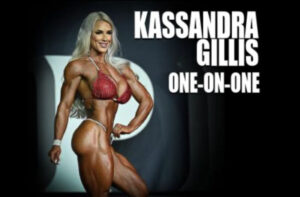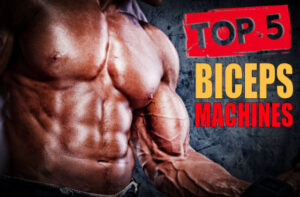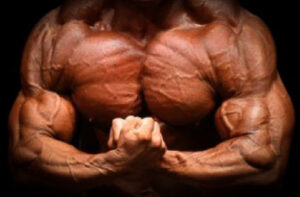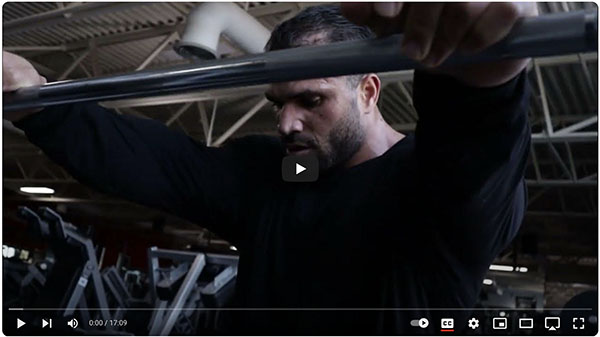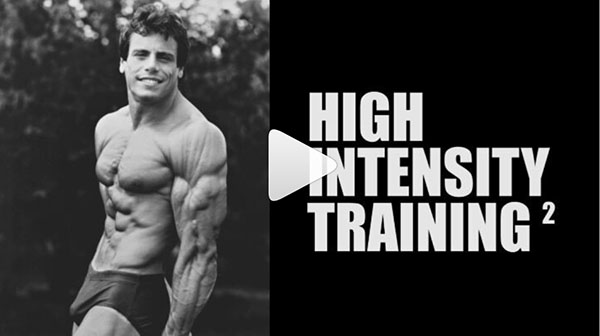Click on a title for more details
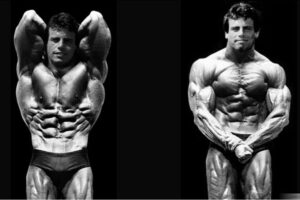 By Roger “Rock” Lockridge
By Roger “Rock” Lockridge
There is a game called “Six Degrees of Separation,” in which you pick someone and connect yourself or someone else to that person through people you both may know. The most popular version of this game is with Kevin Bacon. Bodybuilding fans and fitness enthusiasts in Canada could play this game with Canada’s fitness and training expert, John Robert Cardillo. Athletes who have competed in the Olympia or people trying to lose weight to improve wellness may have been influenced by Cardillo during his career in the industry.
![]()
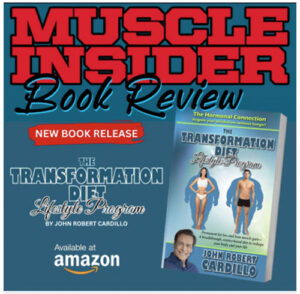 By Domenic Mauro
By Domenic Mauro
In a newly published book, The Transformation Diet Lifestyle Program, fitness/conditioning expert and Muscle Insider writer John Robert Cardillo presents a new strategy for fat loss. Unlike most diet book writers, Cardillo does a deep dive into the biochemical effects of the foods we eat that cause fat gain.
![]()
By Roger Lockridge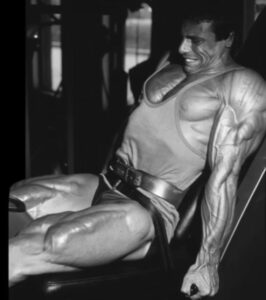 “Mr. Hi-Intensity” was a direct student under the Nautilus and HIT founder.
“Mr. Hi-Intensity” was a direct student under the Nautilus and HIT founder.
Imagine lying on the floor, collapsed in a pool of sweat. Your legs are aching; your heart feels like it could explode right through your chest. As you try to open your eyes, sweat blurs your vision. There is a voice screaming, but it just sounds like noise.
That sounds like an extreme moment, and it is. Now, imagine that this was only after four sets of a leg workout.
This was the situation that young Canadian football player John Robert Cardillo found himself in. He was training under the watchful eye and intense voice of Arthur Jones, who had just pushed the then-16-year-old through those four sets that he said brought him to “absolute muscular failure.”
![]()
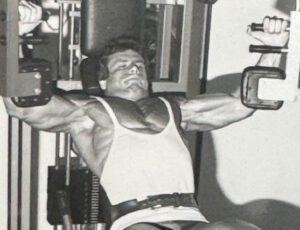 By Roger Lockridge
By Roger Lockridge
Cardillo learned pre-exhaustion directly from the master.
Several fitness pioneers, such as Jack LaLanne, Joe Weider, and Arnold Schwarzenegger, have become household names. Another is Arthur Jones, the founder and creator of Nautilus machines and the godfather of High-Intensity Training (or Hi-Intensity Training, as Jones preferred).
Many bodybuilding champions traveled far to learn the benefits of Nautilus and HIT first-hand from Jones. Canadian high school football player and bodybuilder John Robert Cardillo traveled 26 hours for such an opportunity. His miles were rewarded with two workouts.
![]()
By Roger Lockridge
The former Canadian bodybuilder eats much differently than he used to.
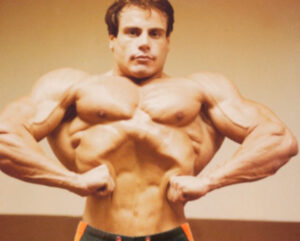 Bodybuilder John Robert Cardillo began his training by following a high-volume routine. He eventually adapted to the high-intensity training approach created by Nautilus founder Arthur Jones. Over the years since, Cardillo has created his own form of training, which he calls HIT3. He uses it to educate trainers who work for him in his Transformation Mastery clinics.
Bodybuilder John Robert Cardillo began his training by following a high-volume routine. He eventually adapted to the high-intensity training approach created by Nautilus founder Arthur Jones. Over the years since, Cardillo has created his own form of training, which he calls HIT3. He uses it to educate trainers who work for him in his Transformation Mastery clinics.
The same can be said for Cardillo’s approach to nutrition. He followed the advice published in the magazines, which called for several meals every couple of hours. He evolved to a diet considered an extreme version of intermittent fasting.
![]()
By Derek Dufour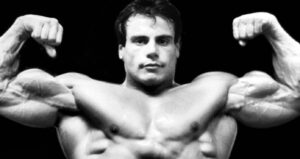 Bodybuilder John Robert Cardillo revealed his unconventional approach to nutrition that may leave many in the fitness community stunned. Cardillo now advocates for a drastic form of intermittent fasting – 22 hours per day. The bodybuilder spoke candidly in an interview with Barbend about his method and why he doesn’t find it to be extreme.
Bodybuilder John Robert Cardillo revealed his unconventional approach to nutrition that may leave many in the fitness community stunned. Cardillo now advocates for a drastic form of intermittent fasting – 22 hours per day. The bodybuilder spoke candidly in an interview with Barbend about his method and why he doesn’t find it to be extreme.
John Robert Cardillo has pioneered his own training style, HIT3, which he teaches at his Transformation Mastery clinics. His innovative approach extends to his diet as well, which he describes as a drastic version of intermittent fasting. Cardillo fasts for 22 hours each day, confining his eating to a two-hour window. He asserts that this regimen has helped him maintain peak physical condition, a sentiment echoed by many of his clients.
![]()
 by John Robert Cardillo
by John Robert Cardillo
When people think of the term “bodybuilding,” the first image and association that comes to mind is usually that of a muscular male physique. Therefore, many of those individuals may think that my hi-intensity HIT3 Training Program is only geared towards men because of my affiliation with bodybuilding. In reality, I’ve trained more women than men over the course of my career, and I call the program Beauty-Building through Bodybuilding.
![]()
Glute Reshaping – Part 1
by John Robert Cardillo A lot of women want that posterior backside with shapely glutes that allows her to wear jeans or a bikini, making her feel fit and sexy. The shape of a woman’s glutes changes with age, as does the rest of the body. In particular, as women get older, their buttocks experience marked atrophy, and in essence become flatter, fatter and wider. The roundness and definition disappears. Most women don’t understand why their buttocks lose their youthful shape and appearance as they get older. This situation is accentuated in women who don’t exercise at all, exercise improperly, or don’t weight train.
A lot of women want that posterior backside with shapely glutes that allows her to wear jeans or a bikini, making her feel fit and sexy. The shape of a woman’s glutes changes with age, as does the rest of the body. In particular, as women get older, their buttocks experience marked atrophy, and in essence become flatter, fatter and wider. The roundness and definition disappears. Most women don’t understand why their buttocks lose their youthful shape and appearance as they get older. This situation is accentuated in women who don’t exercise at all, exercise improperly, or don’t weight train.
The GLHAM Program – Part 2
 The most effective HIT3 posterior backside program that I’ve developed is called the GLHAM program. It’s made up of specialized exercises performed on the best scientific equipment that target the nine individual muscles of the glute area and adjoining muscles. Working each muscle in this manner stimulates the muscle to contract, which causes firmness and hypertrophy.
The most effective HIT3 posterior backside program that I’ve developed is called the GLHAM program. It’s made up of specialized exercises performed on the best scientific equipment that target the nine individual muscles of the glute area and adjoining muscles. Working each muscle in this manner stimulates the muscle to contract, which causes firmness and hypertrophy.
The GLHAM Program Workout Principles – Part 3
 To achieve the best results from this GLHAM program, each exercise must be performed to total muscular failure as per my HIT3 workout protocol. Each workout should be more demanding than the previous one, by either performing more repetitions with the same weight used or increasing the weight (during the next workout) when 11 repetitions are completed. Progressively increasing the resistance is key to hypertrophy.
To achieve the best results from this GLHAM program, each exercise must be performed to total muscular failure as per my HIT3 workout protocol. Each workout should be more demanding than the previous one, by either performing more repetitions with the same weight used or increasing the weight (during the next workout) when 11 repetitions are completed. Progressively increasing the resistance is key to hypertrophy.
![]()
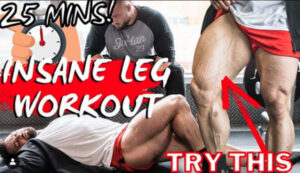 by John Robert Cardillo
by John Robert Cardillo
In May 2019, I started training Zane Watson to help him prep for several Pro Show competitions and the Mr. Olympia. I introduced Zane to my Hi-Intensity (HIT3) workout methods. Zane’s one of the hardest working bodybuilders that I’ve ever met. He loved the short intense workouts and over the course of 4 months, made incredible improvements. Experiencing firsthand how beneficial Hi-Intensity training is versus the high-volume training, that he was used to, Zane totally changed his workout practices and philosophy. In fact, he started to train his own clients at his gym using Hi-Intensity methods!
![]()
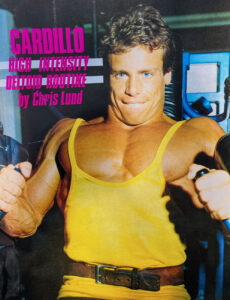 By Chris Lund
By Chris Lund
Reprinted From BODYBUILDING monthly
I don’t know how to put it but there’s a certain magic involved when you know something is the truth. It’s something that money cannot buy and in bodybuilding it becomes the ultimate gospel.
Many trainees simply do not believe what they read and who can blame them anyway. Granted our sport has made tremendous strides during the past few years. The magazines are better than ever. Full colour quality layouts that make other sports magazines look sick.
![]()
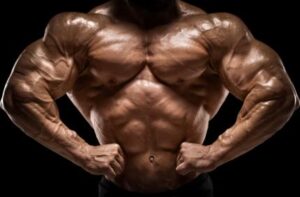 by John Robert Cardillo
by John Robert Cardillo
The biggest mistake I made when I started bodybuilding was training 6 days a week. Even Sundays were hard for me to take off, I couldn’t miss a day. Everything I read in bodybuilding mags featured champions who trained 6 days a week and some even trained twice a day! My rationale was, “If they trained this way to become champions, I would also”. At 16 years of age, I ate, thought and slept bodybuilding, 24 hours a day. I was obsessed! I had a greater passion for bodybuilding than anyone I knew and wanted to become as great as my then idol Arnold Schwarzenegger.
![]()
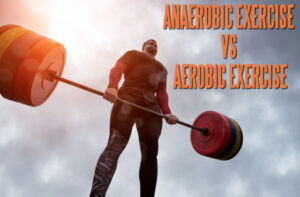 by John Robert Cardillo
by John Robert Cardillo
The fundamental principle of exercise science is that weight training is an anaerobic exercise, rather than aerobic exercise.
Anaerobic exercise is geared to the development of strength and muscular size by performing high intensity, short duration exercise. During anaerobic high intensity exercise physiological stress is quite high therefore working out more than 45 minutes per session, 3 times per week, is not possible. Anaerobic exercise is the opposite of aerobic exercise.
![]()
 by John Robert Cardillo
by John Robert Cardillo
This home version of our HIT3 training program will give you the muscle-building challenge you crave all while using the equipment you have in your home gym.
Workout Description
Whether it’s by choice or by factors outside of their control, some fitness enthusiasts and bodybuilders have started training at home. Because of this, it could be considered more challenging to get a quality workout in. Some of the popular programs out there aren’t designed for home gym warriors.

 Looking for a new muscle-building challenge? This 8-week high-intensity training methodology pushes you to failure, not once but three times, for the ultimate pump.
Looking for a new muscle-building challenge? This 8-week high-intensity training methodology pushes you to failure, not once but three times, for the ultimate pump.
Workout Description
Insanity is sometimes defined as doing the same thing over and over again while expecting different results. If you’re going through a rough patch in your fitness journey, or if you simply want a new muscle-building challenge, this is it!

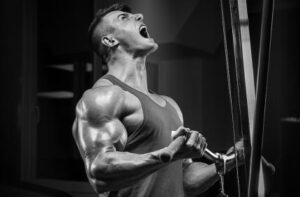 by John Robert Cardillo
by John Robert Cardillo
Unlike other training programs which are easier to perform because they demand less intensity of effort, the HIT3 system of high-intensity exercise is challenging and requires extreme commitment. There’s nothing leisurely about a HIT3 workout. Every set must be performed with total concentration and to the point of total muscular exhaustion which is a state that even experienced bodybuilders seldom experience. The fact is, HIT3 training is the hardest training anyone can perform.
![]()
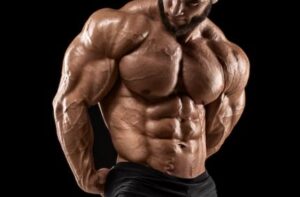 by John Robert Cardillo
by John Robert Cardillo
The meaning of “intensity” is the effort being exerted to perform a specific task. The meaning of “HIT3 HI-Intensity Training” is the extreme degree of an all-out effort being exerted against heavy resistance during the performance of an exercise by training to positive, negative and static failure. I personally believe this is the single most effective method of increasing strength and muscular size.
![]()
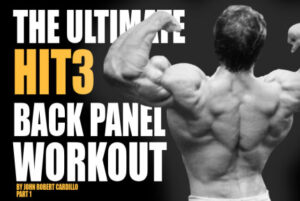 by John Robert Cardillo
by John Robert Cardillo
As part of my HIT3 workout program, the back and lats are trained during the third and final workout of the week. This workout is performed two days after the second workout of the week. The reason I advocate taking two days off (instead of one day off) after the lower body workout is to allow the central nervous system (CNS) more recuperation time. The third workout consists of training what I refer to as the “back panel”: lats, rear deltoids, and trapezius.
Part 2
In this, the second part of the HIT3 Back Panel workout, we focus on the rear deltoids, which work alongside the trapezius, rhomboids and scapula to retract the shoulders back. This function is key in preventing the shoulders from hunching forward.
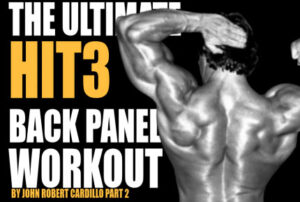 The rear deltoids’ origin points are at the lateral third of the clavicle, the acromion and the scapula. It inserts at the humerus near the deltoid tuberosity. The nerve that is connected to this muscle is the axillary nerve at C5 and C6.
The rear deltoids’ origin points are at the lateral third of the clavicle, the acromion and the scapula. It inserts at the humerus near the deltoid tuberosity. The nerve that is connected to this muscle is the axillary nerve at C5 and C6.
Part 3
The final part of my HIT3 Back Panel workout is trapezius training. Well-developed trapezii add thickness and depth to a muscular back. Without adequate trap development, the back will look hollow and undertrained. Finishing a back workout with trapezius work makes total sense because the traps are engaged in most of the lat exercises we covered in Part 1 and the rear deltoid exercises we covered in Part 2 of this series of articles.
![]()
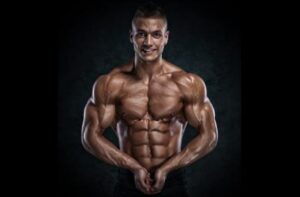 by John Robert Cardillo
by John Robert Cardillo
Positive Concentric Failure
The First Principle of HIT3 training is performing a set of exercise until the muscle being worked is unable to perform one more full rep because it’s reached positive/concentric failure/exhaustion. Training heavy and to positive failure requires a muscle to increase its strength to be able to complete more reps on your next workout. Strength increase is followed by muscular size increase. This is a simplified explanation of how muscle growth happens; there are of course more variables involved. Read More…
![]()
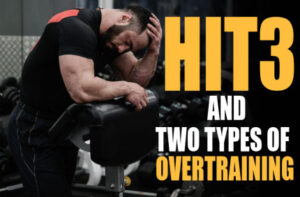 by John Robert Cardillo
by John Robert Cardillo
The first type of overtraining that most bodybuilders fall into is performing too many light sets for a particular body part which they call volume training. They erroneously believe that more sets for a body part are better than less sets. To perform high volume of exercise, one can only logically conclude that this is possible because they are not exercising with maximum intensity. Therefore, they are overtraining the same muscle fibres which will hinder growth.
![]()
 by John Robert Cardillo
by John Robert Cardillo
Many bodybuilders are under the false impression that the pump they achieve through volume training equates to muscle growth. If this was the case, marathon runners, who achieve a good pump from their daily 15 to 25 km runs would have larger muscles than 100 yard sprinters. Yet the opposite is true.
![]()
 by John Robert Cardillo
by John Robert Cardillo
You must use a weight that is heavy enough to allow you to perform 8 strict repetitions within your strength ability. Then through sheer determination and motivation you must push yourself to perform several more repetitions where you attempt to complete a total of 10 or more.
![]()
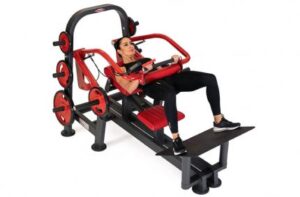 by John Robert Cardillo
by John Robert Cardillo
More than any other body part, developing toned glutes has become an obsession for female gym-goers, and now every gym has one or more glute exercise machines. But glute machines have actually been around for decades. In this article, I’m going to review what I believe to be the top five glute machines available worldwide.
![]()
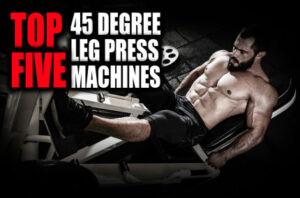 by John Robert Cardillo
by John Robert Cardillo
To build herculean thighs, it’s imperative for bodybuilders to include 45 degree leg presses in their workout routine. It’s a go-to exercise to achieve defined leg muscles. Other than conventional barbell squats, the 45 degree leg press exercise is the only way to develop muscular, sweeping thighs, which every serious bodybuilder wants to build.
![]()
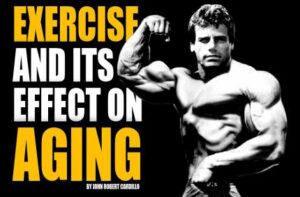 by John Robert Cardillo
by John Robert Cardillo
Dr. David Sinclair, a professor of genetics at Harvard Medical School, says that exercise is another way to combat the aging cycle. Sinclair has conducted experiments that demonstrate slowing and potential reversal of the aging cycle. He used an 80-year-old man as a test subject for his theory, and the man was confused for a much younger person based on his presentation.
![]()
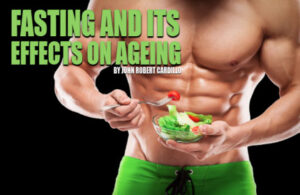 by John Robert Cardillo
by John Robert Cardillo
David Sinclair is a professor at Harvard Medical School whose research regarding the benefits of fasting has challenged our understanding of aging and how learning and memory are directly affected by degeneration of your nerves. It may fly in the face of traditional “bodybuilding diets,” but Sinclair believes that to achieve maximum health, we shouldn’t be eating three meals a day or three meals plus several snacks.
![]()
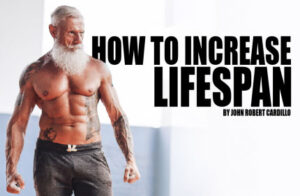 by John Robert Cardillo
by John Robert Cardillo
There’s an old expression in sports: “Father Time is undefeated.” That means aging athletes can rarely turn back the clock to their glory days as their careers wind down. Up to now, the same expression has held true; you can’t turn back the clock on aging. But a Harvard University professor is working to disabuse that idea with research and experiments that could lead to humans living longer while enjoying a better quality of life.
![]()
 by John Robert Cardillo
by John Robert Cardillo
Nicole Rakowski is a 28-year-old woman who has been physically active since her youth. She was always a competitive athlete, pushing herself past her limits in practice and training. Achieving levels of discomfort as a challenge to her physical capacity was, and still is, a motivator for Nicole.
![]()
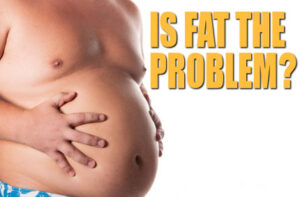 by John Robert Cardillo
by John Robert Cardillo
If imitation is the purest form of flattery, then Adonis and Aphrodite should be honoured to know that they’ve been emulated for thousands of years. In Greek mythology, Adonis was a rare male beauty; he encompassed everything a man should be. Broad shoulders, a handsome face, and a svelte body were the attributes that defined Adonis as one of the most sought-after premier male physiques in Greek mythology.
![]()
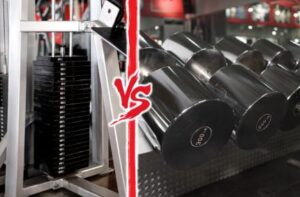 by John Robert Cardillo
by John Robert Cardillo
There has been a long-standing debate on which is a better exercise tool, machines or free weights. They obviously both provide stimulus to muscles being exercised. Some machines have been designed to provide better resistance throughout their full range of motion, while others may provide too much resistance at the starting point of the exercise and less at the contracted position. Each piece of modern exercise machine has its good points and not so good points.
![]()
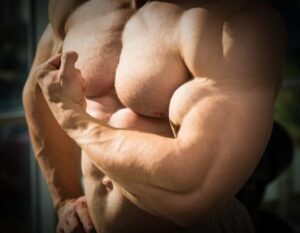 by John Robert Cardillo
by John Robert Cardillo
Intense sun exposure is the stimulus that causes sunburn which results in a suntan, likewise hi-intensity training is the stimulus that causes muscle soreness which results in muscular growth. In the case of a sunburn, it takes several days of total rest away from the sun to allow the skin to recuperate and heal. As is the case after a hi-intensity workout session. Total rest and recuperation is the only way to ensure that the worked muscles have a chance to grow. The reward of hi-intensity training are “growth days”.
![]()
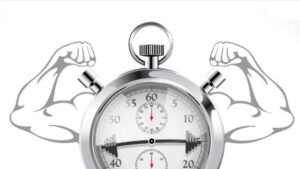 by John Robert Cardillo
by John Robert Cardillo
When working a specific body part, the rest time between exercises determines the level of intensity and degree of hypertrophy achieved. To train with the highest intensity that I advocate in my HIT3 workout system, no rest is permitted between exercises. Only the time needed to move to the next exercise. Taking more than this minimal time causes the muscle to recuperate and maximum muscle fibre recruitment is hindered. This leads to overtraining the muscle fibres that were stimulated in the previous set. Therefore, a particular body part must be worked from start to finish without any rest. Rest of one to two minutes is permitted after completing a body part and moving on to the next body part.
![]()
 by John Robert Cardillo
by John Robert Cardillo
Hi-intensity anaerobic exercise is the imposition of the highest stimulus on a particular muscle in the shortest period of time until total muscular failure is reached. For an exercise to stimulate hypertrophy it must recruit the greatest percentage of muscle fibres to maximally contract. This can only be accomplished by using sufficient resistance as a stimulus to cause a particular muscle extreme distress. Anything less than this type of hi-intensity work will not stimulate optimal hypertrophy.
![]()
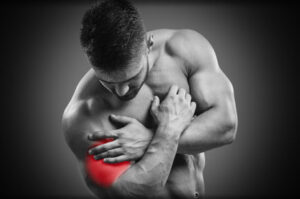 by John Robert Cardillo
by John Robert Cardillo
Muscle soreness is a result of muscle damage. After a high-intensity workout, there is delayed-onset muscle soreness (DOMS) because of the neuromuscular damage caused to the nerves connected to the muscle fibres stimulated. Therefore, soreness is experienced one to two days later, usually peaks on day 3 and then starts to subside by day 5. By day 7, the muscles that were sore should be totally recuperated and ready for another workout.
![]()
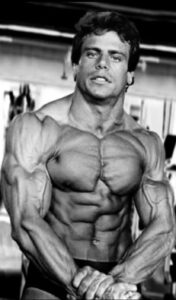 BY MICHAEL FERNANDEZ
BY MICHAEL FERNANDEZ
John Cardillo is one of those people who seem like they’ve seen and done it all but is humble enough to reassure you they haven’t. As a former bodybuilding champion and having seen firsthand the industry change dramatically over the last two decades, John has a lot to share. John took some time out of his busy schedule to answer a few questions.
Hi John, can you give us a brief history lesson on your early successes with bodybuilding and how you go into the business side of things with running your own gyms?
Bodybuilding taught me work ethic, because every workout is a challenge that you do at least three to four times a week. Every time you work out, you have to put out a lot of effort that involves intense mental focus and discipline. Therefore, to succeed in bodybuilding, you have to be very disciplined and you have to have a comprehensive plan, from training, to what you eat, to how much sleep and the rest you get.
![]()
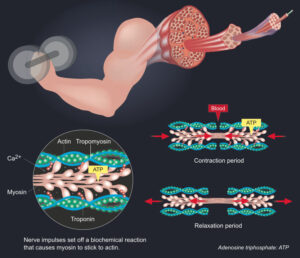 by John Robert Cardillo
by John Robert Cardillo
Muscles are composed of bundles of muscle cells, which are referred to as muscle fibres. Each contains many myofibrils, which are made up of actin and myosin filaments. When performing high-intensity exercise, such as my HIT3 program, they interact more and more until all the actin and myosin are working in synchrony to hold the muscle cell at a particular length (resisting the load) and then shortening the muscle, implying a concentric contraction (pushing the weight/load back up). The stimulus for growth comes from three main conditions: muscle damage, mechanosensation and metabolic fatigue.
![]()
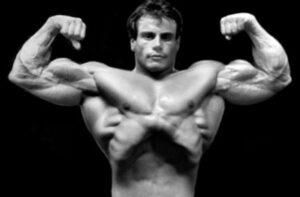 by John Robert Cardillo
by John Robert Cardillo
The stomach vacuum is rarely seen on most modern bodybuilders’ physiques. It’s a physical attribute that very few bodybuilders possess in today’s competitive culture. It seems that heavily muscled bodybuilders have somehow developed such a thick core and serratus muscles that they’ve lost the ability to spread out the rib cage and “open the body up” when doing classic poses such as the double biceps, lat spread and side chest poses.
![]()
 by John Robert Cardillo
by John Robert Cardillo
Worst Mistakes Made by Personal Trainers
In most gyms, personal training is just another sales process to make money for the business. The well-being of the client is hardly taken into consideration. If a gym member doesn’t opt to buy personal training sessions, he or she doesn’t get a custom-made program or receive any guidance on how to use the various equipment on the gym floor. This leads to member attrition, poor business reviews, higher rates of employee turnover and, ultimately, the business losing revenue. A frequent occurrence is using slick sales tactics to shame members into buying personal training. However, properly assessing individuals to determine what shape they’re in and what program would be most suitable for them can improve training adherence, health outcomes and personal training sales.
 What Makes a Great Trainer?
What Makes a Great Trainer?
About 90 percent of today’s commercial gym trainers are “workout enthusiasts” who are committed to working out as part of their lifestyle and arrive at the decision that they want to make a career out of their chosen hobby and therefore become personal trainers. Most, if not all, are self-taught by reading exercise information in magazines, on the internet and through social media. They imitate physique champions’ workout routines and diet regimes and mistakenly consider themselves workout experts. They endeavour to get accreditation through weekend certification courses, which at best, offer minimal training and expertise in professional training.
![]()
 by John Robert Cardillo
by John Robert Cardillo
We now know that fasting releases high levels of HGH in any person practicing the dietary ritual. Fasting releases ketones, which delays aging during the fasting period. Researchers say we can stop age-related illnesses and diseases in the human body. Cancer, cardiovascular disease and Alzheimer’s could theoretically be a thing of the past if more people fasted.
![]()
 by John Robert Cardillo
by John Robert Cardillo
The pituitary gland is extremely important for the generation of human growth hormone (HGH). This hormone is the catalyst for many actions that the human body engages in, including body growth, the body’s composition, the repair of damaged cells and control of the metabolism. Another aspect of the work HGH performs is that it will increase muscle, improve strength during exercise through improved performance and help a body recover faster from injury and illness. When your HGH levels are low, you’re susceptible to disease and increased body fat, hurting your quality of life.
![]()
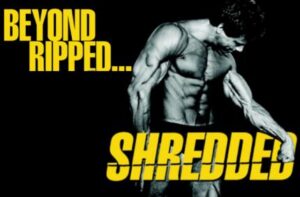 by John Robert Cardillo
by John Robert Cardillo
1. Nutrition Program
A nutrition program based on Macronutrients, Intermittent Fasting and Supplementation. The goal of his SHREDDED diet is to eat the right amount of carbohydrates to fuel hi-intensity workouts, lean protein to feed muscle growth and repair while minimizing fat intake to keep daily calories as low as possible. Read More…
2. Bodybuilding Competition
Q. I read in one of Bob Kennedy’s magazines that you trained in California to prepare for competitions?
A. Yes, I did! Everyone was heading to California to train at the famous Gold’s Gym and be involved in the whole bodybuilding scene that Arnold created. From a training standpoint my experience was great. Read More…
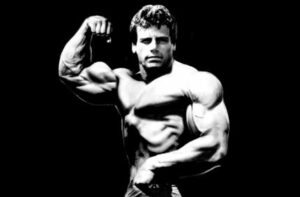 3. Catching the Iron Bug
3. Catching the Iron Bug
To have a successful career in bodybuilding, it takes more brains than brawn. No one’s a better example of this than Canadian bodybuilding champion and business entrepreneur John Cardillo. A self-made man who at age 15 and weighing just 122 pounds, decided to start weight training to get bigger with the hope of making his high school football team.
![]()
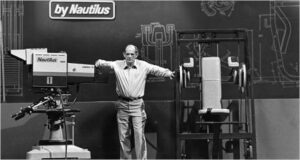 by John Robert Cardillo
by John Robert Cardillo
Q. Arthur Jones had a training philosophy that was totally opposite to how bodybuilders were training at the time. Tell us about Arthur Jones.
A. Jones was ahead of his time. His method of training was one set of each exercise performed to concentric failure followed by as many negative (eccentric) repetitions as possible. This type of training was done mostly on the Nautilus and Medx Fitness machines that he invented. He was a critical thinker who understood physiology, and he had a real passion for scientific ways to do things. I loved his authoritative style of speaking and how he was able to push me far beyond what I thought I could do. I was a sponge around him, because he was a genius. I went down to see him many times, and attended seminars that he ran. I stayed in touch with him until he passed away.
![]()
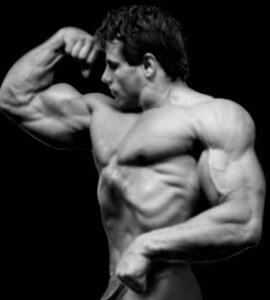 by John Robert Cardillo
by John Robert Cardillo
The fundamental principle of exercise science is that weight training is anaerobic exercise, rather than aerobic exercise.
Anaerobic exercise is geared to the development of strength and muscular size by performing high intensity, short duration exercise. During anaerobic high intensity exercise physiological stress is quite high therefore working out more than 45 minutes per session, 3 times per week, is not possible. Anaerobic exercise is the opposite of aerobic exercise.
Aerobic exercise is geared exclusively to the development of endurance by low intensity, long duration activity. The goal of aerobic exercise is to increase endurance, which means the capacity to do more work for a longer period.
![]()
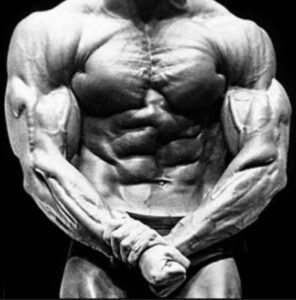 by John Robert Cardillo
by John Robert Cardillo
Q. Hi John, I’ve been lifting weights for approximately 2 hours a day, 6 times a week for the last year. I’ve gotten leaner but I’m not gaining size. I know you’re really big into the less volume approach and I read some articles about your HIT3 Workout System. Below is my current training split. Please let me know what you think?
![]()
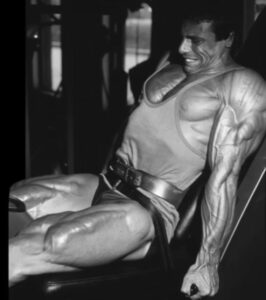 Author Reobert Kennedy
Author Reobert Kennedy
Breathing like a racehorse, Cardillo hurried to the squat rack, and without knee wraps or a lifting belt, positioned his shoulders and upper chest under the Olympic bar to start the fourth exercise of his leg workout. The bar was loaded with 10 plates (45 pounds each), 5 per side for 495 pounds in total. He lifted it off the squat rack, took one step back, took a deep breath and descended in a full squat position — with his back perfectly straight — until his buttocks almost touched the floor. With him stopping in this awkward position, I wasn’t certain he was coming back up. Never had I seen this type of squatting. I started to think that I was here to pick it up.

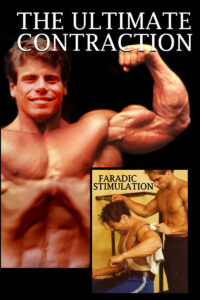 By Lenard Thompson
By Lenard Thompson
Very little has been written on the practical use of electrical muscle stimulation for body building. A great deal of data is available on its clinical use. For therapeutic use Faradic stimulation has proven to be very useful. In cases of broken limbs, electrical stimulation is a must to prevent skeletal muscles from deteriorating and weakening. Even in a cast while a broken bone is healing skeletal muscles can be exercised by the application of electrical stimulation. Recuperation time is greatly reduced, and 100% mobility quickly restored. What has intrigued most researchers about Faradic stimulation is the increase in girth and strength of post-surgery limbs. It has been proven time and time again that an injured quadriceps treated with electrical stimulation was actually bigger in girth and stronger by comparison than the uninjured and untreated quadriceps.

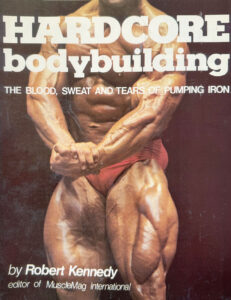 By Robert Kennedy
By Robert Kennedy
Article featured in HARDCORE BODYBUILDING
Electrical stimulation machines have been around for over 20 years. You may have even used one in your high school science class to get a reflex in a dead frog’s leg.
Electrical stimulation is a proven aid to strengthening, rehabilitating and actually building muscles. In fact Dr. Charles Godfrey, head of the rehabilitation department at Toronto’s Wellesley Hospital, made a formal study which concluded that “there is greater average improvement with electro-stimulation than with exercise, and it’s faster and easier.”
HARDCORE BODYBUILDING
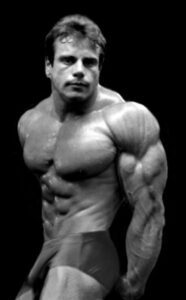 By John Cardillo
By John Cardillo
Article featured in Iron Man Magazine
At the age of 15 I was bitten by the iron bug. Within a few months of touching a barbell I knew my life would totally center on bodybuilding. My enthusiasm was overwhelming and my energies were totally directed towards my daily workout. Most of my friends could not understand why I would quit playing football and hockey, sports which I excelled in, just to lift weights. It seemed absurd my high school football coach who could not understand why I would trade the glory associated with high school athletics for a dingy and dirty YMCA weight room. None the less my mind was set and I was determined that I would transform my scrawny 140 pound body into a physique that would make even the biggest and strongest football player stop in awe, and take notice.
![]()
 By John Cardillo
By John Cardillo
Article featured in Iron Man Magazine
The effects of electrical stimulation (Faradic Current) on skeletal muscles have been recognized for more than a century. Faradic stimulation was first used as part of strength training programs by top Russian and eastern block athletes. It was discovered that the Russians had been employing Faradic stimulation with great success, in their athletic training programs, at the 1972 Olympic Games in Munich, West Germany and decades since. In particular the Russian athletes have always displayed extraordinary hypertrophy and definition in large muscle groups.
Canadian physical educationists visited the Soviet Union and brought back interesting reports of an “Electric Stimulator” that would produce incredible hypertrophy. A group of orthopedic surgeons from Carleton University in Ottawa, Canada, became very intrigued by this new Faradic technique and began a study of its use on the treatment of post surgery, atrophied quadricep muscles.
![]()
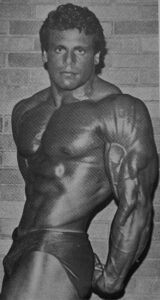
By Lennard Thompson
Article featured in Iron Man Magazine
In superb condition John Cardillo, of Niagara Falls Canada, overwhelmed a strong field of contestants to win the USBE Open Eastern America Classic. Much had been written in the local newspapers on the competition and especially of Cardillo competing. The residents of Berwick, Pennsylvania and Tony DeFrancisco, the promoter, anticipated a great competition and got one indeed.
From the first round of relaxed judging it was apparent that Cardillo was the man to beat. Greg Golden of Pairmont, West Virginia, with a superbly thick upper body was the only contestant who came close to matching Cardillo’s huge size. Golden, at 5’8″ weighed 205 while Cardillo, at 5’10, weighed 228. Third place went to an ageless champion, Claude Rigon of Surf City, New Jersey who had just won the Mr America Competition
![]()
By Jason Robert
Article/Podcast featured in Medium
Life has its ups and downs. Nobody knows that more than John Cardillo, the former head of Premier Fitness, which owned a large chain of fitness clubs, and was once listed as one of Canada’s best-managed companies, was extremely successful, and had gyms across Ontario.
Yet things didn’t work out the way Cardillo had hoped. In 2009, he was diagnosed with a rare form of cancer, which had left him no longer capable
of presiding over the day-to-day operations of the business. As a result, he
sold the chain of fitness clubs. Under its new ownership, the business
struggled, and its demise made front-page news across the country.
![]()
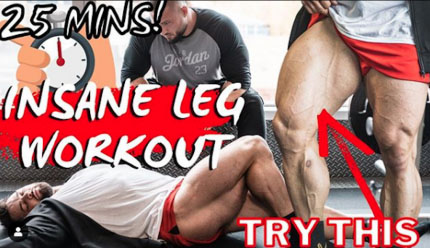 by John Robert Cardillo
by John Robert Cardillo
In May 2019, I started training Zane Watson to help him prep for several Pro Show competitions and the Mr. Olympia. I introduced Zane to my Hi-Intensity (HIT3) workout methods. Zane’s one of the hardest working bodybuilders that I’ve ever met. He loved the short intense workouts and over the course of 4 months, made incredible improvements. Experiencing firsthand how beneficial Hi-Intensity training is versus the high-volume training, that he was used to, Zane totally changed his workout practices and philosophy. In fact, he started to train his own clients at his gym using Hi-Intensity methods!
![]()
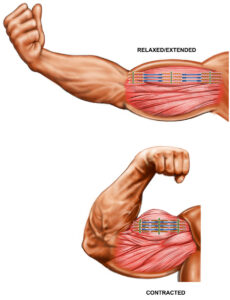 By John Cardillo
By John Cardillo
Article featured Cardillo Seminar on HIT3
Our bodies are predominately made up of millions of muscle cells that make up our more than 640 individual muscles. Muscle cells are our body’s engine that allows us to function and survive. Without muscle cells we would not be able to move or have any ability to exist. Our muscles are our “metabolic engine” (no different from the car’s engine) that controls every aspect of our active life.

